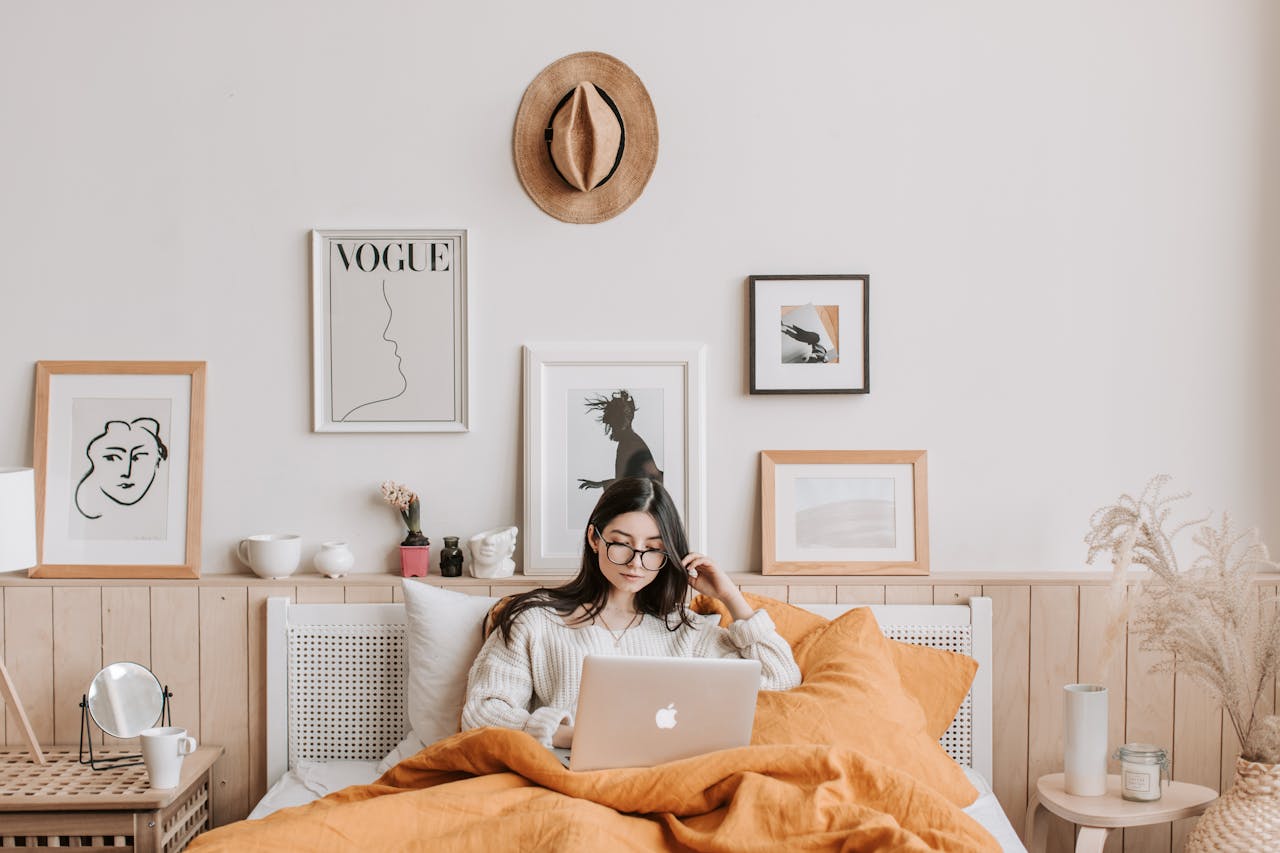Incorporating art into your home staging strategy can elevate the aesthetic appeal of your property and create a lasting impression on potential buyers. Art not only adds personality and depth to a space but also helps to highlight a home’s unique features. Here are some practical tips for integrating art into home staging strategy to maximise its impact.
Choose Art That Appeals to a Broad Audience
When staging a home, it’s essential to select artwork that resonates with a wide range of buyers. Neutral or abstract pieces often work well because they evoke emotion without being overly specific. Avoid art that is overly personal or polarising, as it may detract from the buyer’s ability to envision themselves in the space.
Match Artwork to the Room’s Purpose
Art should enhance the function and mood of each room. For instance, calming landscapes or soft abstracts can work beautifully in bedrooms, creating a serene atmosphere. In contrast, bold, dynamic pieces might suit a living room or dining area, adding energy and character to the space.
Use Art to Highlight Key Features
Strategically placed artwork can draw attention to a room’s standout features, such as a fireplace, high ceilings, or a unique architectural detail. By directing the eye to these elements, you can help buyers appreciate the home’s full potential.

Consider Scale and Proportion
The size of the artwork should be proportional to the space it occupies. A large piece can anchor a room and create a dramatic focal point, while smaller works are ideal for creating intimate moments in hallways or nooks. Avoid overcrowding walls, as this can make the space feel cluttered.
Coordinate with the Colour Scheme
Artwork should complement the home’s colour palette. Use pieces that echo or contrast with the dominant hues in a room to create visual harmony. For example, a monochromatic piece can add sophistication to a neutral space, while a vibrant painting can inject life into an otherwise subdued room.
Use Proper Lighting
Lighting plays a crucial role in showcasing artwork. Natural light can enhance the vibrancy of colours, while accent lighting, such as picture lights or track lighting, can add a gallery-like feel. Ensure that the art is well-lit without creating harsh shadows or glare.
Create Balance and Flow
When arranging multiple pieces of art, aim for balance and cohesion. Group similar styles or themes together to create a unified look. In open-plan layouts, use art to guide the eye and create a sense of flow between spaces.
Keep It Minimal
While art can elevate a space, it’s important not to overdo it. Too many pieces can overwhelm a room and distract buyers from the home’s features. Focus on quality over quantity, ensuring each piece has a purpose and enhances the overall design.

Incorporate 3D Art and Sculptures
Don’t limit yourself to paintings and prints. Sculptures, wall hangings, or other three-dimensional pieces can add texture and interest to a space. These elements can be particularly effective in entryways or as tabletop accents.
Rotate Pieces for Variety
If your property is on the market for an extended period, consider rotating artwork periodically to keep the staging fresh and engaging. This can help attract repeat visitors and maintain interest in the property.
Conclusion
Integrating art into your home staging strategy is a powerful way to enhance the property’s appeal and create an unforgettable experience for potential buyers. By carefully selecting and placing artwork, you can add style, emotion, and value to your staging efforts. Follow these tips to ensure your art choices elevate your home’s presentation and help it stand out in the competitive real estate market.